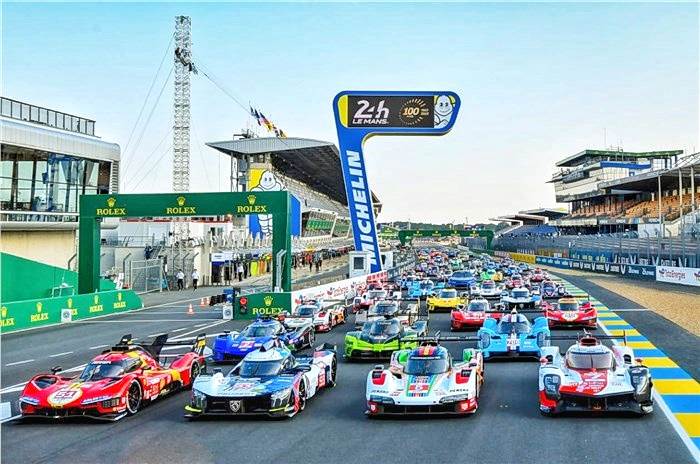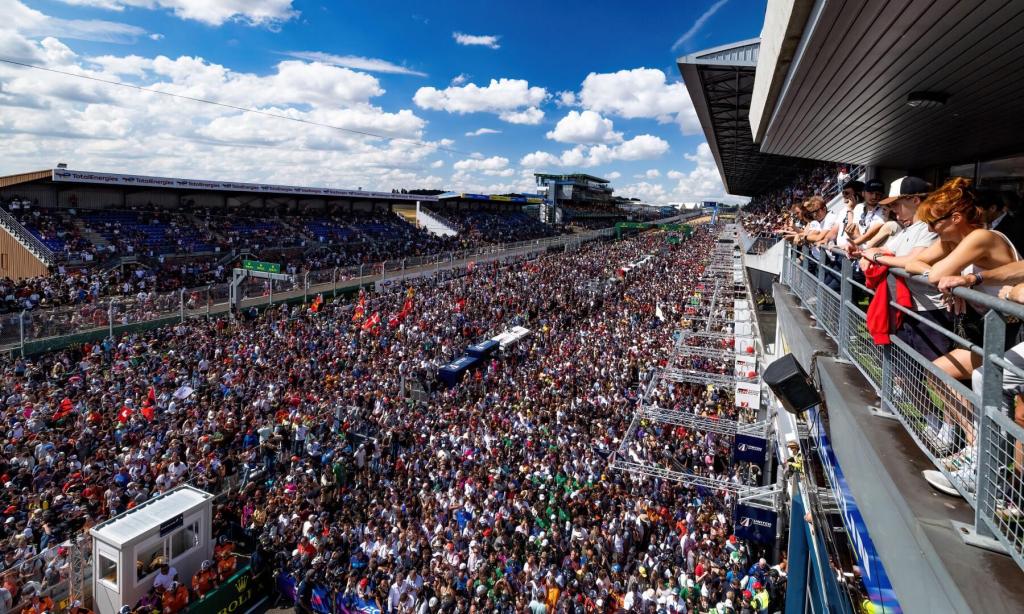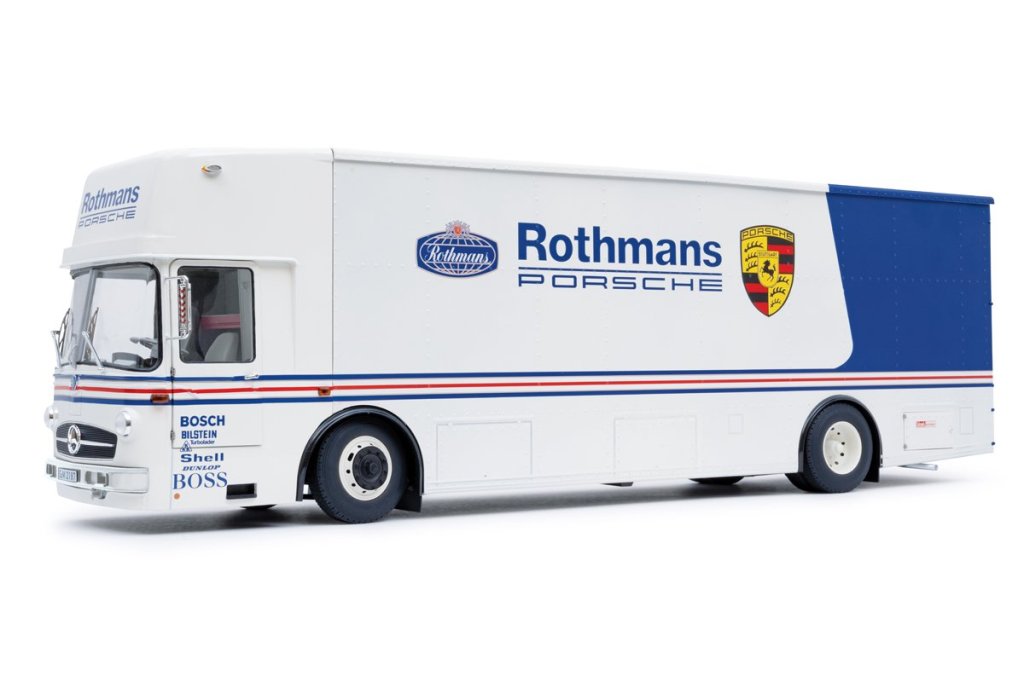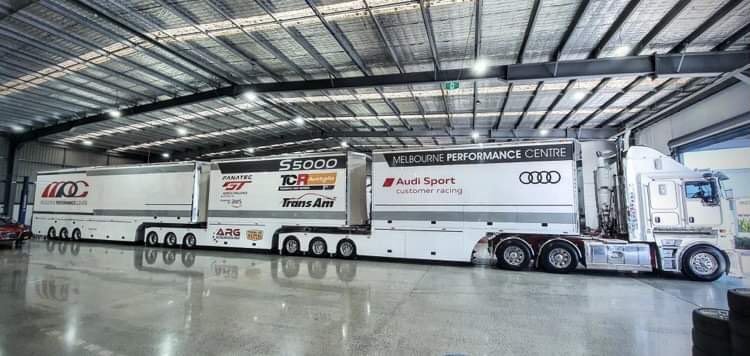Comparisons between sports by diehard fans, always without fail degenerate into a battle of whose sport or code is the better. To me, it seems to be an exercise in futility & a total & utter waste of time. Most of it is media driven rubbish by second rate sports journalists (generally from the murdoch press) looking to create a story out of nothing on a slow news day.
I’m certain that most diehard motorsport fans have had discussion or arguments about the relative skills of motor racing drivers compared to the skills of athletes from other sports thrust upon them, whether they like it or not. It’s a discussion that generally includes comments such as “Yeah but they’re a bunch of blokes only driving around in circles” or ” They’re not athlete’s they just drive a car fast” or “Anyone could do that” etc. It’s almost like some are itching for an argument. As a fan of many different sports, it does make me wonder why people endeavor to put someone else’s sport of choice down. For the life of me, why can’t fans just enjoy what they follow without having to belittle athletes & fans of other sports or pastimes? In Australia, the fans of each of the football codes seem to always be in a pissing contest with each other. The attitudes & comments by the leaders of the Football codes – Australian Rules, Rugby League & Rugby Union, make me sometimes wonder if they’re actually being run by the grown-ups or they have a group of kindergarten kids running the show. It was pathetic watching these people carrying on about the recent Womens Soccer World Cup. It really was quite the wonderful journey the girls in The Matilda’s took us on with them in making the World Cup finals. It was fantastic to see how well they played here in Australia. But, you wouldn’t think, so by seeing these old fat white guys trying to belittle the round ball game at every opportunity.
Although I respect the abilities of participants involved in many other sports, the skill of race car drivers absolutely amazes and enthralls me. But, it doesn’t mean that I feel as though I have to justify it. It is at this stage that I just back away from these discussions. I really couldn’t be bothered wasting my breath.
So, the following is not meant to be me, making a point about motorsport being better than any other sporting pastime. It’s simply me, defining why I love following motor racing. Take it on board or not.
Motor sport is a vast grouping of many different individual categories. Most of them operate completely independently from each other. The sport has a myriad of different classes of cars, trucks, motorcycles & basically anything that runs off an engine as its power source. Motor sport has categories that race on bitumen sealed circuits, dirt tracks (speedway), drag racing strips, rallying & many other places where the participants can safely compete against each other. I follow a particular class of motorsport called Endurance Sports Car Racing that competes on sealed bitumen race & street circuits. Race distances are usually 6, 12 or 24 hours in duration, although some races are allocated a distance, eg 1000 klms. As the description name suggests, the makes of vehicles competing are made up from manufacturers like Ferrari, Porsche, Lamborghini, Audi, Bentley, McLaren, Jaguar, Renault Alpine, Aston Martin, Corvette (GM), Maserati but also have many of the mainstream car manufacturers such as Toyota, Ford, General Motors, Peugeot, Mazda, Mercedes Benz, BMW, Nissan, Honda also competing.
The most popular endurance sports car race in the world is the Le Mans 24 Hour held every year in France. 325,000 people attended this years centenary race at the 13.626 klm Circuit de la Sarthe.


Le Mans is only one race in the calendar for endurance sports car racing.
Race teams compete at a different venue almost every time they race during a season. The tracks can change, with weather conditions, track modifications and configurations. Car set-ups can be quite dramatically different from the previous time drivers & teams were there. Even racing in a different season of the year can change a circuit’s characteristics. Drivers can change teams, and subsequently be driving a totally different make and type of car from when they were last there and pretty much have to start from scratch to get the car sorted out for that circuit. Different tracks require a totally different car set-up, eg, fast, like Le Mans- flat, long straights, ultra fast corners, with a low drag, high speed spec. Laguna Seca in the U.S.A. with undulating corners and shorter high speed sections. Brands Hatch in the UK is a circuit with much shorter straights & tight corners.
In endurance racing, what works for one driver in a car doesn’t necessarily work for his team mate who hops straight into a car to take over, in a following stint. Team mechanics and engineers have to get a car sorted to work for multiple drivers and their individual driving styles. Then of course there is the tyres. Different race circuits have different characteristics on tyre wear, with different surfaces. What works on one particular track can become vastly different on another track. Racing series can change a brand of tyre (Michelin, Dunlop, Pirelli, Goodyear, Firestone etc) from one year to the next. Different tyres with different compounds, & grip & wear characteristics complicate things even more. A car can run on one brand but perform differently on another.
The days of hopping into a car and simply driving the wheels off the thing are long gone. These days the cars are a hell of a lot more reliable, but there are many more variables that have to happen to give you a good result on race day. In modern day race cars the drive trains are practically bulletproof, but the skills of the drivers have to be more in tune with the car. Being fast in qualifying doesn’t necessarily win you the race. Being consistently fast and reliable with the ability to read the car over the period of the race with all the different, inconsistent, condition changes, will get you over the line onto a podium position. Having mechanical sympathy for a car is nothing new, but being able to read it and sometimes nurse a car & tyres to the finish line is a talent and a skill that is very important in modern racing. Can a team double stint tyres? Can a driver get a lap extra out of a tank of fuel? In doing so, a car can be handed over for its final run to the flag hopefully with enough left in the tyres, & the fuel capacity to make a sprint race out of it. During races, drivers are continuously fed information through onboard technology & are in constant touch with the team race strategist at all times.
For a team arriving at an annual event like the Bathurst 12 Hour endurance race in Australia, it goes something like this:- They arrive at the track, some having travelled from overseas & some being Australian teams coming from all parts of the country, early in the week prior to the race. The team get settled with accomadation. Many people imagine all forms of elite motor sport are much like what they see with Formula One – Rediculous amounts of money being thrown around, luxurious accomadation, mixing with celebrities & partying with Hollywood stars at the casino in Monte Carlo etc. The reality for most race teams is that their accomadation & food arrangements are usually budget hotels & takeaways. Some teams camp at the track. Some of the factory race teams, Porsche & Audi are a bit more upmarket but still not quite in the F1 league.
Race transporters have to be unpacked. The race cars & pit garages have to be sorted out. This involves tons of equipment being set up. Modern day motor sport requires lots of data analysis, so it’s not just tools & spares. There is information & data collected from the car and the car engine itself which is meant to help drivers and engineers understand the behavior of the machine in the dynamic environment of racing conditions. The amount of electronic equipment & computers required to keep track of the performance of the car on track can be just as much, if not more, than the spares, these days.


The drivers arrive, practice and qualifying starts. If the team has been there before, they have a pretty good idea of what needs to happen, to get them into a position to be in contention on Sunday afternoon. If, like the Bathurst 12H, it’s an early season event, the teams may be slightly rusty, after the Summer/Southern hemisphere & Winter/Northern hemisphere break. They may strike some issues early in the week that may require lots of additional work to get the car on track, and that’s before the event is even under way.
There are fan/media commitments & sponsor & promotional activities that drivers & teams have to attend. The drivers are like any other bunch of athletes. They are dedicated sportsmen & women. They live to race & compete against each other at the highest level. However, sponsors keep the sport alive, which means that many of the drivers have to attend most of the pre-race functions etc & answer all the same questions over & over again. To many of them, this is the only part of their chosen sport that they dislike. Like footy & cricket players, they just want to play the game they love. However the drivers are the face of the team that the public & media want to see. I’m no different when it comes to seeing my favorite drivers & teams performing at their optimum performance at various races that I attend, but I’m not a fan of all the pre-race stuff that goes on.

As an interesting side note – These days, at the Bathurst 12 hour race, we arrive in town on the Friday night, go to the circuit Saturday & Sunday & head home on Monday. In years gone by, we used to drive down on Wednesday. Because the vast majority of the crowds didn’t arrive until Saturday, it was possible to wander around the pit paddock & garages on Thursday & regularly bump into many drivers & team members. The year the above photo was taken, Porsche Factory driver Pat Long saw us wandering past & came over, said hello & had a chat because he noticed I was wearing a Flying Lizards T shirt, the team he drove with back in the old American Le Mans Series days. Arriving earlier certainly has its benefits. Most of the guys are happy to have a break from all the other setup stuff they have to do & are generally up for a chat or a photo. You literally run into Le Mans, Nurburgring, Spa, Daytona & Sebring race winners at every turn.
Like other sports, they are in demand to be interviewed with their thoughts & opinions on the upcoming race, their personal lives & anything else that media interviewers apparently need to know.
Scrutineering (car legality check) takes place. The on track action starts on Friday for Free Practice when the cars are out on the circuit for the first time. This is usually the first time that teams get to see how their car is going to actually perform at any given circuit. Things start to really get real serious on Saturday for Qualifying. They may think they have a fast car, but then the opposition blows past them like they are standing still, and they have to get better times out of the car if they are to be competitive in the race. It’s a fine balance between a quick car on the fast long straights of Mt Panorama, but losing time over the top of the mountain & down the tight twisty sections coming down the mountain circuit.
Endurance sports car racing is a little different from other types of motorsport. Many races have classes for only fully professional drivers who are generally fighting for the outright win & other races also have a mix of pro & amateur drivers, some in the same race car, driving together. There are so many areas that can end a weekends racing for a team. Endurance racing relies on many amateur rich guys to often get cars onto the grid. These guys are quite often handy steerers who can turn in some pretty quick times, in favorable conditions. They’re not pro-drivers who do this for a living, but are guys who love racing and have the finance behind them to buy a drive (or sometimes a whole team) and usually perform quite well. The car may be fast, with a pro driver in it, but the guy who is paying the bills may not be able to get his head around it quite as well. On the other hand, if the weather turns sour, drivers who can perform ok in dry conditions, many times find themselves way out of their comfort zone.
So, qualifying day arrives. Teams prepare their cars for getting the fastest time possible in the conditions, to set the starting grid for the following days race. Usually the quickest guy gets the job to qualify the car in the highest possible grid position for the beginning of the race.
There are a few different schools of thought for qualifying. The race is an endurance event with hours of racing, many pit stops for fuel, tyres & driver changes taking place, so it isn’t the end of the world if the car is not on the front row of the starting grid on race day. But keep in mind, drivers like other athletes have that super competitive streak in them. They all want to be the fastest in qualifying, to start the race up front. There is no doubt that being in front at the start definately has its advantages. You control the pace, you have free air in front of you. Oh, & I forgot to mention, this race being twelve hours duration, starts in the dark at 5.45am in the morning. So the first half hour or so has yet another element of danger & skill to it. Circulating with speeds of up to 300 kmp down Conrod straight in the dark with the blinding lights of 60 cars behind you certainly makes you aware that you are alive, & want to stay that way.

Motor racing being what it is, usually means that most tracks are well away from built up areas. Mt Panorama at Bathurst has yet another skill requirement that many of the overseas teams & drivers have to learn about & contend with.
So, the race is underway. Many teams further back on the starting grid use their amatuer drivers to start, with the strict instructions of – Keep the thing in one piece & stay off the walls. The Am guys have a minimum drive time in the cars, so teams cannot just put the pro guys in to gain an advantage. The ams have to do their fair share of driving.
Many people view endurance racing as a long drawn out affair, but with modern day cars, they are built to last the distance easily. That is not to say that they are totally bullet proof. Do anything stupid with them & your day can be over very early into the race.
The initial plan is to get to the first programmed pit stop & see how well things are going then. The aim of everyone in the race, is to get the car & team into a top ten position heading into the last few hours to give yourself a decent run to the checkered flag. By about half way through the event, most teams start to work back from the finish time (in the B12Hr-5.45pm) & backplan their pit stops, at planned lap count intervals. This is why the team strategist, working in combination with the engineer/controller is so much in important member of a team. With cars usually doing exact lap counts per full fuel load, teams know exactly how far they can go, without the car running out of fuel somewhere out on the track. Tyres only last a set duration too. Flog them too early in the driving stint & they have a point where the tyre wears out prematuraly & litterally drops of the cliff & your lap times plummet. Nobody usually remembers the behind the scenes team members, but they are are vital part of all race teams.
Motor racing being what it is, also means that accidents can happen. Cars tangle with each other. Drivers make mistakes. Rain can hit the circuit turning your high grip, dry weather, slick tyres into ice skates. Weather radar plays an important roll in the team strategists list of things to keep an eye on during a race. Being fully aware of when impending bad weather is to hit the race circuit & knowing exactly when to pit the car to change to wet tyres is vital. Run a car that is on wets when the rain hasn’t yet hit the track can be disastrous. Your car could turn into a mobile chicane with everyone passing you, if you go too early. Anything can happen. If an accident takes place blocking the track, a full course yellow caution usually bunches up the field. Designed to give Race Control another tool to aid recoveries and safely manage on-track incidents during the race, the Full Course Yellow (FCY) system will see all cars required to slow to 80 km/hr in single file on the instruction of Race Control, potentially reducing the use of the Safety Car. Anyone breaking the FCY cops a penalty, which often can take them out of contention for a podium position. Everyone wants to see an incident free race to the checkered flag, but accidents take place for many different reasons, & problems usually crop up towards the end of a race when the adrenylin is pumping at a high rate. There is no such thing as a patient race driver when the end of a race in imminent. These guys are all professional enough to not stupidly end their own races or anyone else’s with a crazy or dangerous manouver. But what they are all paid to do, is take the opportunities when they present themselves. If there is a gap created, a professional driver will take it in a nanosecond. Being patient & waiting for another one won’t win you the race. That is why they are so good at what they do. Porsche factory driver Matt Campbell’s winning move within the final minutes of the 2019 race finish shows that well. There was absolutely nothing between the Aston Martin & binning that Porsche into the wall that day.
As all teams have access to exact timing & electronic information on their cars, it really becomes a total team effort to get the car into a winning position in the final hours of a race. One slipup from the driver, the pit mechanics, the refuelers, the team strategist can lose a race for a team that has battled so hard to get into contention. Everyone has to be at the peak of their game for the winner to cross the line first. There are very rarely any second chances.
Sidenote – That particular day in 2019, I wasn’t actually at the race (2019 Bathurst 12 Hour). I was at the base of the Himalayas with our family, in Northern India, not far away from the tallest mountain in the world- Mt Everest. We were in India for our sons wedding. I think the Nepalese locals thought that this Aussie in their midst had gone stark raving mad. I was watching the final stages of the race on a live stream at the time, when Matty Campbell made that historic pass to go on & win the 2019 Bathurst 12 Hour race for the Porsche Works/Earl Bamber Motorsport team.
Aside from the actual racing, I follow all the team gossip, comings & goings of team members, as other sports fans do with their sports & teams. As I’ve already mentioned, the drivers are only one part of a race team. The owners, managers, strategists & many other team members have become well known to motor racing fans as well, for the vital work they do in making these teams function as well as they do. If you watch the excellant Netflix series, F1 Drive to Survive, it details how the inner workings of a race team works.
There are plenty of racing doco’s & movies out there, but very few manage to explain in detail how teams have to perform & operate as a unit to get success. One of the very best documentaries ever made about motor sport & in particular, endurance sports car racing, is a film commissioned by the German car manufacturer, Audi, detailing their success at the Le Mans 24 Hour race in 2008, called “Truth in 24″. It is available free of charge to watch on YouTube. Well worth a watch, even if you only having a passing interest in motorsport.
Sidenote – Sport of all persuations should be a subject that Film Producers should be able to recreate into movies without adding over the top scenes detailing non-factual events, for dramatic effect, that generally don’t happen in the real event. Motor racing (& sport in general) has all the completely natural drama taking place. The preparation, the lead up, the start, the background pitlane drama’s, some serious crashes & then the big exciting finish. So why do movie producers feel the need to add romance, a sex scene, a fight scene, rediculous music scores & crazy AI extras that don’t even look real, to bolster up a generally pathetic script for a sport movie? Production companies apparently deem it necessary to completely overdramatize their films with extra bullshit scenes detailing non-factual events to add something to a sports movie. It never works & consequently, most sports movies are box office failures.
But, I digress……Truth in 24 is a documentary/movie that does work, because all of it actually took place. There’s no actors, or made up dramatic scenes. The drivers, team members & other personalities are the real deal. The footage was all taken at the actual race in 2008, & leading up to it.
So, that is why I love this sport. But I also get why others are so passionate about their sport or interest of choice too. I really believe we all need a passion or hobby to follow. Life would be pretty dull without it.
EDIT – Feb 2024 — My son & I recently arrived home from the 2024 edition of the Bathurst 12 Hour endurance race. It is still only February, but I can honestly say that this race will be my 2024 sporting highlight. Whatever other events in the sporting world take place will have to be something quite incredible to beat this one. Having my favourite Porsche factory team – Manthey Racing win the thing was icing on the cake. The winning car was driven by Queenslander Matt Campbell (who also won the race in 2019), Belgium driver Laurens Vanthoor & Turkish driver Ayhancan Güven.

